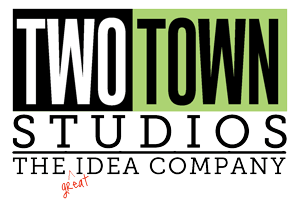Where has all the flat art gone…long time passing….
(I hope you are old enough to remember “Blowin’ in The Wind”, and if not, well, skip the title and get back to geometry class.)
We have been hearing a lot lately about the ongoing erosion of the “flat art” projects. By flat art I mean that group of products that are not 3D, or shaped, molded, textured, woven or whatever – we’re talking mostly, but not exclusively, about paper here, items such as gift bags, wrap and tissue, paper tableware, napkins, gift boxes, and so on. (Greeting cards do remain an exception). We are hearing it from clients, other agents and even established artists who are not with Two Town – there seems to be a significant reduction in both the number and the size of these projects. What is happening here?
A few possibilities:
– Our clients tell us that they are just not producing what they used to – as one paper tableware mfr told us: “We used to do 7 or 8 collections a year, now its 2 or 3”. And when they do produce one, it is in much smaller quantities. Royalties on a paper collection at Target used to be worth several thousand dollars, now it may be only hundreds. Target, WalMart, the various Dollar stores, CVS, Walgreen’s, Party City, grocery and others are all competing to see who can buy the goods at the lowest price, and then are doing only one run and re-setting their aisles every 60 or 90 days. A few years back we had the best selling juvi BD bag in Target for over 2 years running – now it would be thrown out in a few months just on principal because that is the current retail model (ours was still on top when they dropped it…).
– Much of the art for these flat art projects, particularly gift bags and paper tableware, is now sourced through “cattle calls” – those “call for design” requests that are sent to untold dozens of artists and agencies, often complete with detailed art direction. I have seen more than one of these address books, and the odds of your design being chosen from the hundreds and hundreds of similar designs that will be submitted continue to be diluted as more artists get added to the lists. Some of the flag companies have jumped on this bandwagon as well.
– Retail outlets are disappearing. We had a client tell us last week in Atlanta that just a couple of years ago they had 3000 retail outlets, and they now have 1500. Many of the old school gift stores and smaller boutique stores are no more, in large part because of the bottom dollar pricing at the stores listed above. Some categories (scrapbooking, calendars, checks) have peaked and, while still selling, will continue to settle in at lower levels.
– The overseas manufacturers are slowly getting better at designing and supplying (royalty free) basic shelf goods direct to the retailers, effectively cutting out some of the stateside suppliers – and of course their designers.
So, the question is how do you adjust for this? What are your experiences?
